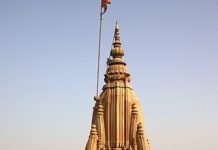Sanskrit is considered one of the world’s oldest languages and mother of many Indian languages. Here are 18 Mind-Blowing Facts About Sanskrit.
1-5 Mind-Blowing facts about Sanskrit
1. Sanskrit is among the world’s oldest languages. Certainly within the Indo-European family at least, it’s among the oldest attested languages (as opposed to hypothetical reconstructions like PIE), was the oldest until Hittite was discovered, and is the oldest with actual speakers.
2. The oldest texts in Sanskrit (the Vedas) are among the oldest in the world, and are believed to have been orally preserved unchanged for more than 2 millennia at least, despite not having been written down for more than a thousand years.
3. The attention paid to language in Sanskrit (study of grammar, phonetics, etc.) was unprecedented outside until almost the 20th century. The modern fields of historical linguistics/comparative linguistics, and ultimately much of the interest in linguistics owes its origin to the excitement at having “discovered” Sanskrit; and big names in linguistics like Chomsky and Kiparsky have acknowledge Pāṇini as an influence.
4. Poetry in Sanskrit is extraordinarily diverse, with over 100 common meters, and books of prosody listing over 600 metres. Its literature includes works of dazzling complexity, including works that tell several stories at once using puns, works that contain words several lines long, brilliant examples of constrained writing, etc.
5. Sanskritic culture had a great reluctance towards writing. Oral transmission was preferred. Even when writing started to appear, it was the least important texts that were set to writing first: accounting work, administrative notices, land grants, followed by literary and scientific works, and the sacred works last of all.
6-10 Mind-Blowing facts about Sanskrit
6. The most extreme example are the Vedas, which apart from being among the world’s oldest texts might well be the ones with the largest interval of time between their composition and first being written down. The oldest layers are dated around 1500 BCE by modern scholars, and they were not set down in writing until probably the Gupta period (5th century or so), which makes some 2000 years.
7. Despite the above fact (initial reluctance to writing), the proliferation of works continued, with the result that there are an estimated over 30 million Sanskrit manuscripts today with a conservative estimate of 7 million in India itself. This means there are orders of magnitude more manuscripts in Sanskrit than in Latin and Greek put together.
8. These manuscripts are on a very diverse range of topics, everything from sacred texts to literary works (poetry, drama, satires, histories, epics, novels) to scientific works (mathematics, linguistics, logic, botany, chemistry, medicine,) to entire works on things as seemingly obscure as elephant-raising or even “A Method to Grow Crooked Bamboos for Palanquin Beams”.
9. Sadly, most of these have not even been catalogued, let alone indexed or digitized or translated.
10. Sanskrit did not have a “default” script (like Devanagari) until very recently (<200 years ≈ the introduction of printing in India); it was written by everyone in the regional script of their region, in over two dozen scripts. This may make it the language that has been written in the most number of scripts. One of the reasons for Devanagari appearing to be the standard today is the power of Hindi, and also the fact that many early Sanskrit works were printed in Bombay where Devanagari is the script of the local language Marathi.
11-18 Mind-Blowing facts about Sanskrit
11. Encrypting the value of pi in a shloka. – There is a numbering system in Sanskrit called theKatapayadi system. This system ascribes a number to every letter or alphabet in the script, something similar to the ASCII system in computer science. When the letter in the following shloka is replaced with their corresponding number from the Katapayadi Sankhya, we get the value of pi accurate to 31 digits.
गोपीभाग्यमधुव्रात-शृङ्गिशोदधिसन्धिग ।
खलजीवितखाताव गलहालारसंधर ॥
OR
Gopibhagya madhuvrata srngisodadhisandhiga|
Khalajivitakhatava galahalarasandhara||
(The shloka extolls Krishna and his achivements.)
12. Sanskrit is the “mother” of the most languages of North India and even the Romani language of the Romani people (“Gypsies”). To be precise, the Indo-Aryan languages evolved from Middle Indo-Aryan languages, which in turn evolved from Old Indo-Aryan = Sanskrit). Moreover, even the Dravidian languages (Telugu, Malayalam, Kannada, and to quite some extent Tamil), which do not have their origins in Sanskrit have borrowed such a large proportion of their vocabulary from Sanskrit that it could well be called their foster mother.
13. The Sanskrit’s sphere of influence extended all the way to South-East Asia (what is now Laos, Cambodia, etc.), without any invasion or use of military power originating from India.
14. Though the importance of Sanskrit has diminished significantly in the last few centuries, it is far from a dead language: Sanskrit literature continues to thrive and flourish, with novels, short stories, essays and epic poems continuing to be written, and its authors picking up several literary awards (including the Jnanpith award in 2006).
15. It is the official language (along with Hindi) of the state of Uttarakhand.
16. There exist many villages in India where everyone speaks Sanskrit. Mathur/Mattur, a village 10 kms from Shimoga speaks Sanskrit on daily basis (day-to-day communication).
17. Sanskrit is the scholarly language of 3 major World religions – Hinduism, Buddhism (along with Pali) and Jainism (second to Prakrit).
18. Even a Sanskrit daily newspaper exists! Sudharma, published out of Mysore, has been running since 1970 and is now available online as an e-paper (sudharma.epapertoday.com)!



































